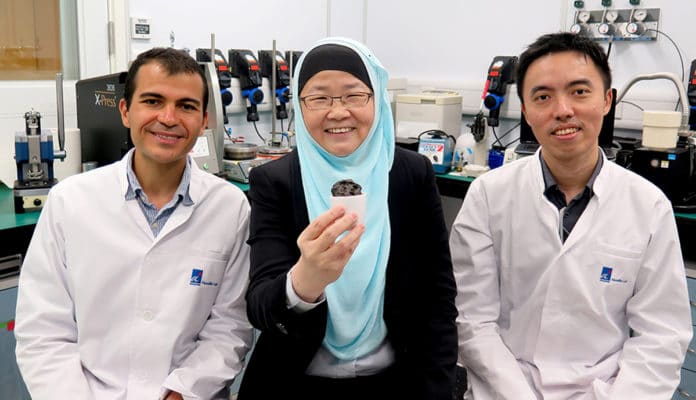When it comes to batteries, capacity and performance are important, but safety is also a fundamental element. Batteries not only contain highly flammable liquid electrolytes that can escape due to cell breakage but also depend on thermally and mechanically unstable electrode separators. While solid-state electrolytes have shown potential for improving the safety profile of lithium batteries, their poor electrode/electrolyte contact, and limited ionic conductivity represent major conductivity bottlenecks in terms of conductivity and low performance.
Now, researchers from the A*STAR’s NanoBio Lab (NBL) in Singapore have designed a semi-solid electrolyte for lithium-sulfur batteries that improve their safety without compromising their performance. Therefore, the chances that these batteries will find a place in a wide range of electronics and energy storage applications as efficient power solutions increase.
The team designed a hybrid quasi-solid electrolyte that was created using a “cupcake” method, where the metal precursors and sucrose are dissolved in water and placed in a pre-programmed furnace. Inside the furnace, the solution gets heated to form a brown ‘cupcake’ shape. This cupcake is then again heated at high temperature to form a liquid-infused porous membrane, made up of highly conductive and chemically stable Li7La3Zr2O12 (LLZO) sheets.
The non-rigid, 3D-sheet framework of the electrolyte allows it to maintain very good contact with the electrodes and prevents it from breaking during assembly and battery management. This leads to safer batteries with better performance. The semi-solid electrolyte obtained proved to be stable over a wide voltage range, which allows it to be used with different lithium battery electrode materials, including high-voltage cathodes.
The newly developed lithium-sulfur battery has shown a high capacity, fast charge/discharge capability, and stabilized the battery’s performance.
In tests, the new electrolyte achieved interesting results – respectively 515 and 340 mAh/g at 1 and 2°C with a charge density of 1.5 mg/cm2. This is “among the highest known performance achieved by lithium-sulfur hybrid quasi-solid batteries.”
“Our 3D sheet-based framework was found to be crucial for optimal battery performance. Moreover, our system demonstrated outstanding stability under extreme temperatures. These results illustrate the excellent potential of our sheet-based structure as a framework for other semi-solid lithium batteries,” said Prof. Jackie Y. Ying, who heads the NBL research team.
The research about the novel Cupcake electrolyte was published in the journal Nano Energy.
